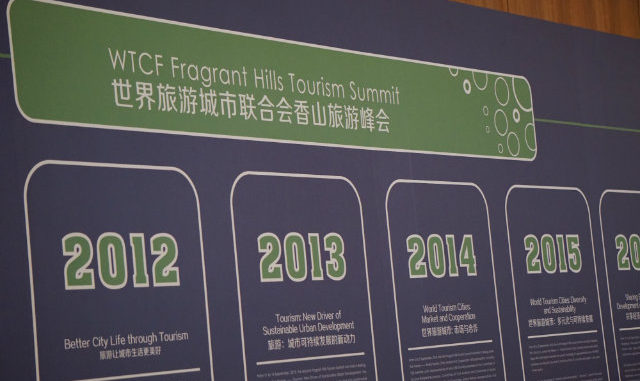
Isabel Cocker/The Santiago Times Staff
LOS ANGELES – It has to be admitted that Latin America has never been a leader amongst the global regions as a tourist destination. Although it is well known for its historic sites, beautiful landscapes and individual cultures, it is also seen as being too remote, too dangerous, and lacking infrastructure by many tourists. However, increased interest in Latin America from countries such as the U.S. and China could provide a boost in visitor numbers and money invested in the region.
For younger travellers, South and Central America have always beckoned as destinations for longer trips, although the continent is still visited less frequently for backpacker tripsthan Europe or Asia. However, for older generations, it is a region seldom picked for an international holiday.
Globalization – A double-edged sword for the tourism market
According to reports by the American Association of Retired Persons (AARP), visits to South and Central America (excluding the Caribbean) made up only 8% of international tourist visits by American Baby Boomers in 2016. More American baby boomer tourists visited England (11%) than both South (2%) and Central (6%) America in total.
The Statesis one of the biggest global markets for outbound tourism and, unlike several other tourism hubs, has direct links to South America from all major airports.
If South America has failed in the past to attract American visitors, it stands to reason that they are also failing to attract more tourists from Europe and Asia.
World Tourism Cities Federation Summit 2017 opens in Los Angeles
Nevertheless, it seems as though Latin America’s star may be growing in the global tourism market, as more and more cities are recognising the economic importance of tourism and are making concerted efforts to attract more foreign visitors. Five of the eleven member cities inducted into the World Tourism Cities Federation this year are from the Latin American region, making it the most represented region among the new participants.

The Secretary General of the WTCF, Song Yu, stated at an interview during the annual summit that Latin America has a lot of untapped potential as a tourist destination; however he cited a “lack of knowledge” about the region as a barrier to global tourists.
Speaking specifically about the Chinese tourism market, one of the most lucrative sources of income for cities, Yo suggested that “an increase in the number of Chinese visitors would create huge impact in the region” in terms of monetary flow into the cities.
“We don’t want to solely concentrate on the U.S. and the European sectors,” he commented, adding that “there is a need to build awareness in China”. He stated that the Chinese are very receptive to the idea of travelling to Latin America but they don’t have knowledge of specific places in the region – instead thinking of the entire region “as a whole”.

In forums during the event, there was a call for cities to capitalize on their unique culture and attraction, thus create a brand through which the city can be recognised. It is this identifiable package which, as Mr. Song highlighted, can be sold more successfully to the foreign market.
However, this process of brand creation and all it entails does not come cheaply. Cities have to invest in research in order to find a commercial niche, once that is agreeable for both the tourists and the original residents of the cities. The Director of Tourism of the city of Valparaiso, Osvaldo Jara, commented at the summit that this is “a long and complicated process, one which you cannot rush”.

Once the initial research and consultation has taken place, specific measures have to be developed and publicity created and disseminated. This, again, costs money – money which many Latin American cities are lacking. Especially in the case of South America, sluggish growth after the financial crash of 2007 coupled with uneasy political environments has led to a downturn in the economy. This impacts the funds available to cities, many of whom would prefer to see investment in basic infrastructure instead of for publicity campaigns.

It has also impacted the disposable income which Latin American citizens have available to spend on foreign travel. According to research by America’s National Travel and Transport Office, visitor numbers from South America to North America in the years 2010-2013 increased steadily by almost 20% each year. However, since 2014, this increase has tailed off, dropping to 7% change in 2014, 3% change in 2015, and falling finally to -6% in 2016.
Whilst the majority of Latin American tourists prefer foreign travel in their own region, citing lower costs, shorter travel time and easier of shared language, the ITB World Travel Trends Report shows that North America continues to be the most popular destination outside of the region.
The Vice-President of Tourism Destination Washington DC, Theresa Belpulsi, underlined that despite the recent economic downturn in Latin America, Washington as a city would be continuing striving to improve the visitor figures for outbound tourism from Chile to the States.

She stated that “Some cities in the United States are abandoning the market in South American countries, however we won’t be doing that.It’s important that we continue working in a place, and not just abandon it because business isn’t doing well.”



